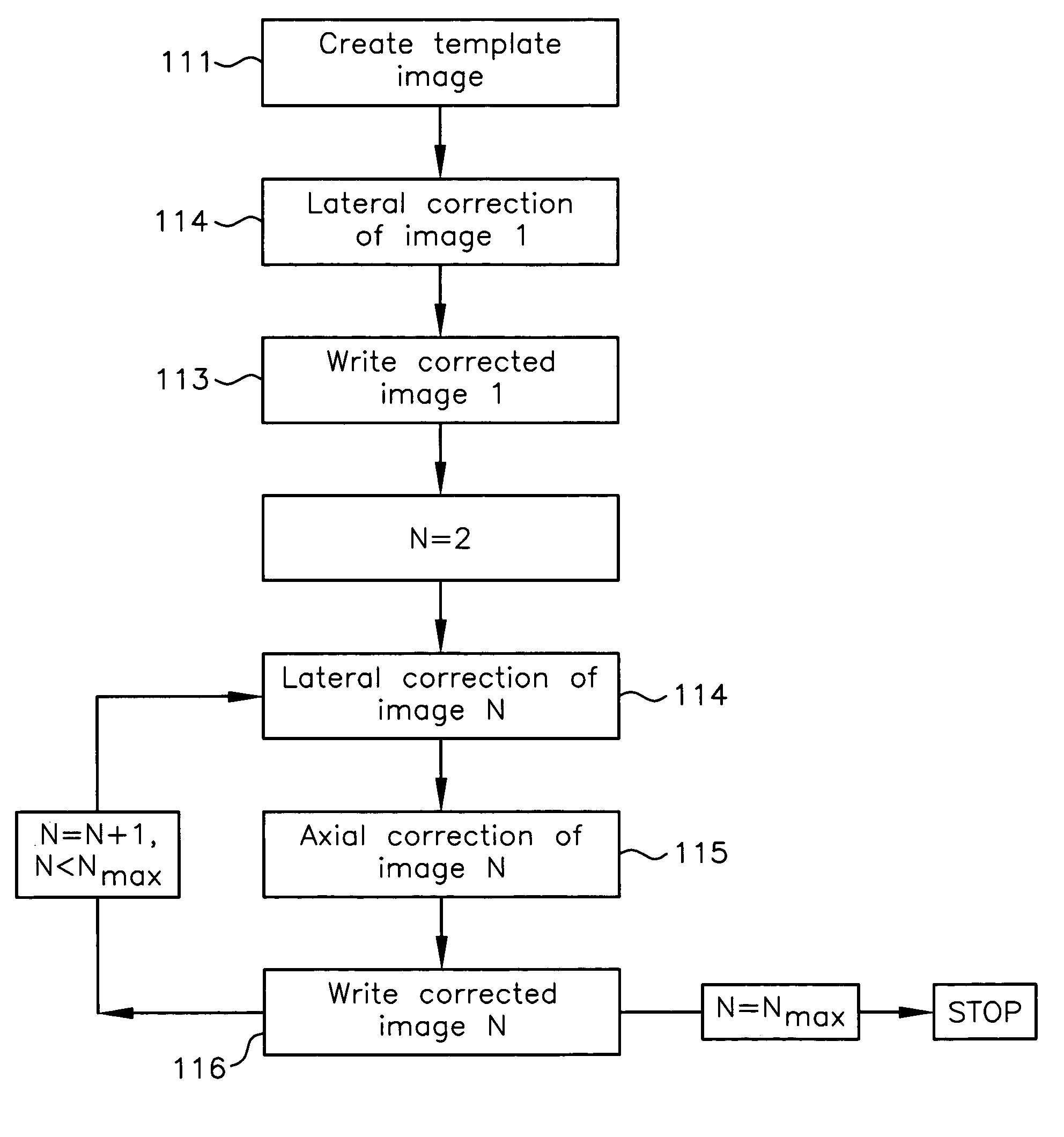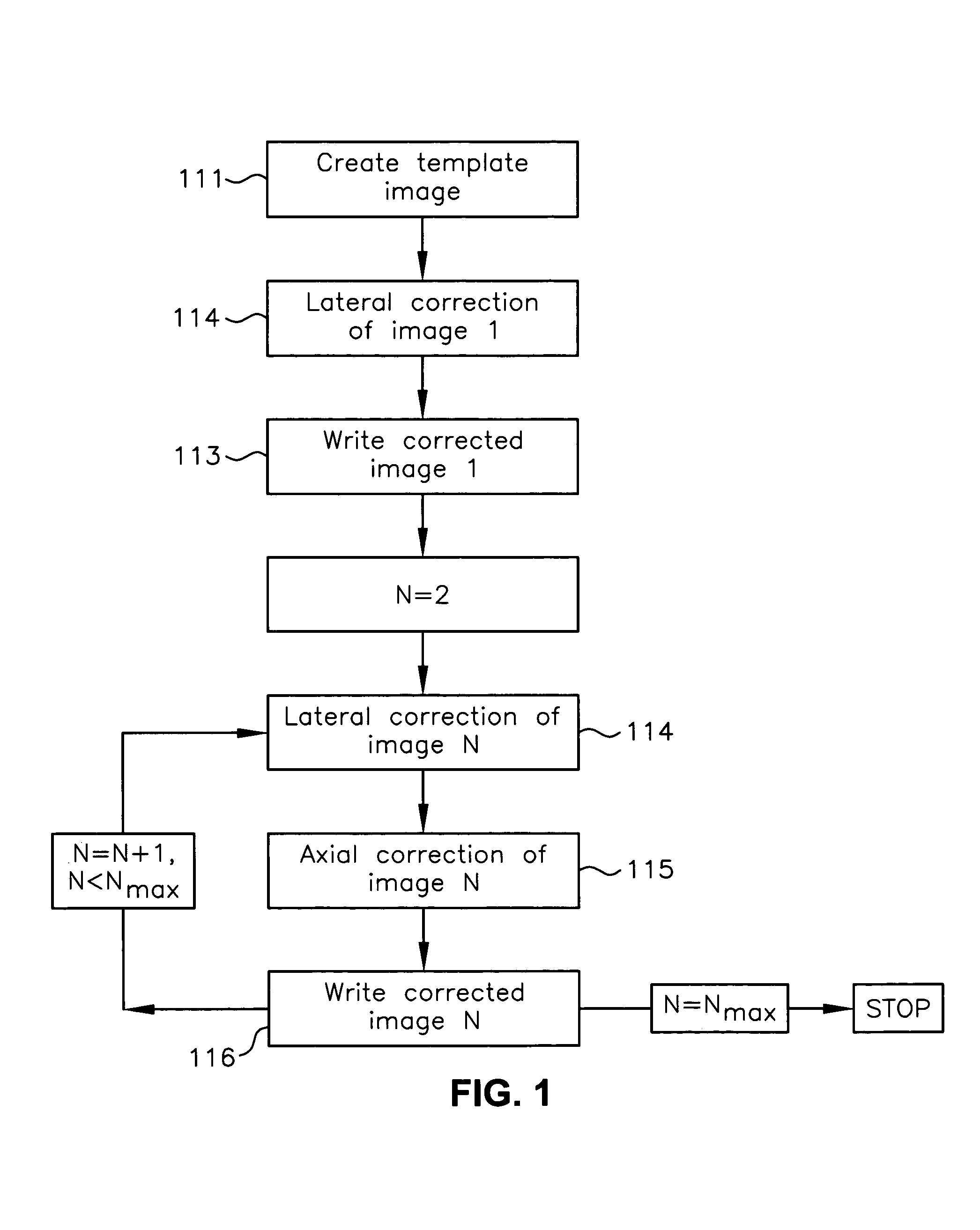Method for correction of relative object-detector motion between successive views
a technology of motion correction and object detection, which is applied in the field of imaging, can solve the problems of difficult to position the rotation axis, the center of the detector's fov, and the difficulty of holding the microcapillary tube stationary while rotating
- Summary
- Abstract
- Description
- Claims
- Application Information
AI Technical Summary
Benefits of technology
Problems solved by technology
Method used
Image
Examples
Embodiment Construction
[0021]The invention is described herein with respect to specific examples relating to biological cells, however, it will be understood that these examples are for the purpose of illustrating the principals of the invention, and that the invention is not so limited. Although the present invention may be employed in other types of imaging systems, such as, for example, X-ray computed tomography (CT) imaging, for concreteness of description the following disclosure is directed toward the invention in the environment of an optical projection tomographic microscopy (OPTM) system.
[0022]In the discussion that follows, the following assumptions are used when providing numerical examples:
[0023]1. Each image consists of an array, 640 pixels wide by 480 pixels high;
[0024]2. Each pixel contains a single 8-bit (gray level 0 to 255) brightness value;
[0025]3. With reference to an OPTM using a microcapillary tube, the tube axis is parallel to the shorter axis (480 pixels);
[0026]4. With reference to...
PUM
 Login to View More
Login to View More Abstract
Description
Claims
Application Information
 Login to View More
Login to View More - R&D
- Intellectual Property
- Life Sciences
- Materials
- Tech Scout
- Unparalleled Data Quality
- Higher Quality Content
- 60% Fewer Hallucinations
Browse by: Latest US Patents, China's latest patents, Technical Efficacy Thesaurus, Application Domain, Technology Topic, Popular Technical Reports.
© 2025 PatSnap. All rights reserved.Legal|Privacy policy|Modern Slavery Act Transparency Statement|Sitemap|About US| Contact US: help@patsnap.com



